Service Design - UX Research - Branding
Proposal for the City Market's shopping experience
Client: Santo Domingo's Market, University of Navarra
Tools: Illustrator, Photoshop, Design Thinking
My team: Saioa Erviti, Miriam García
Research - Branding
This project was awarded by the city market managers for the best proposal
Project overview
Problem Statement
Located in the heart of the city right next to the city hall and with more than 100 years of history. The Santo Domingo market has detected they need to update their services and their presence towards their customers, time, and space.
The visit of customers has decreased over the years and the incorporation of big surfaces it's making it hard to compete.
However, through interviews and research, we found out that customers were still looking for that first-hand shopping, fresh products, and the family environment the market provides.
The process
Research field
Manager / Shop owners / Customers
Understanding the shop-owners points of view:
1. More young people are starting to come. Wanna learn, want the old-school shopping experience. Fresh, bioproducts.
2. Services and schedule are very strict therefore it limits the accessibility to workers, students, young people...
3. The manager is open to organize activities inside the market and together with the bar/club right next to them. This way, she encourages people to come, visit, increase sales, and generate a better environment within the market.
Look & Feel Game
Let's involve people - What keeps them from going to the market?
That's me guiding our volunteers 🚀
We jumped to the streets to see what different possible end-user profiles thought about the current market look&feel through a scale game where they were able to work with us. The game was carried out in two different key city spots: One located on one of the main streets of the old city and then we moved to one of the streets that connect directly to the Santo Domingo's market.
Game results
We concluded that the public's opinion about the services the market provides to the community is generally good, but there's was a lack of interest, especially coming from young people.
1. Traditional place but well taken care of
2. Serious environment with a very specific audience
3. Most of them had been there but they would enjoy a remodeling
Crafting personas & Customer Journeys
Market's personas
Two main groups
The first two are the customers, the young student who finds the market old-fashioned and not 'cool' enough. And the current client is devoted to it because of the tradition.
The last two are the shop owner who's been there forever and loves the market just the way it is. And the new proactive entrepreneur who wants to maintain tradition but keeps in mind the new demands.
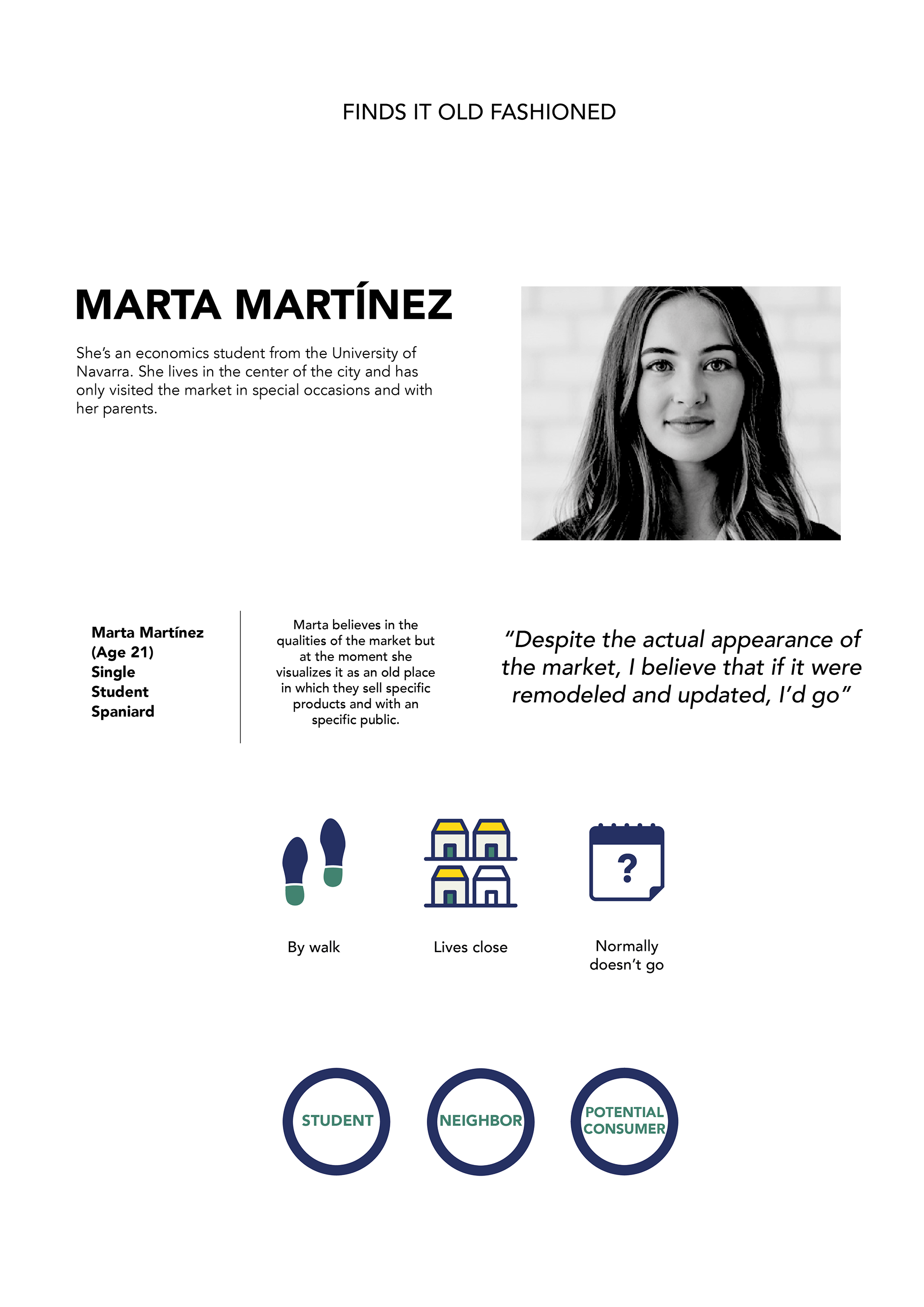
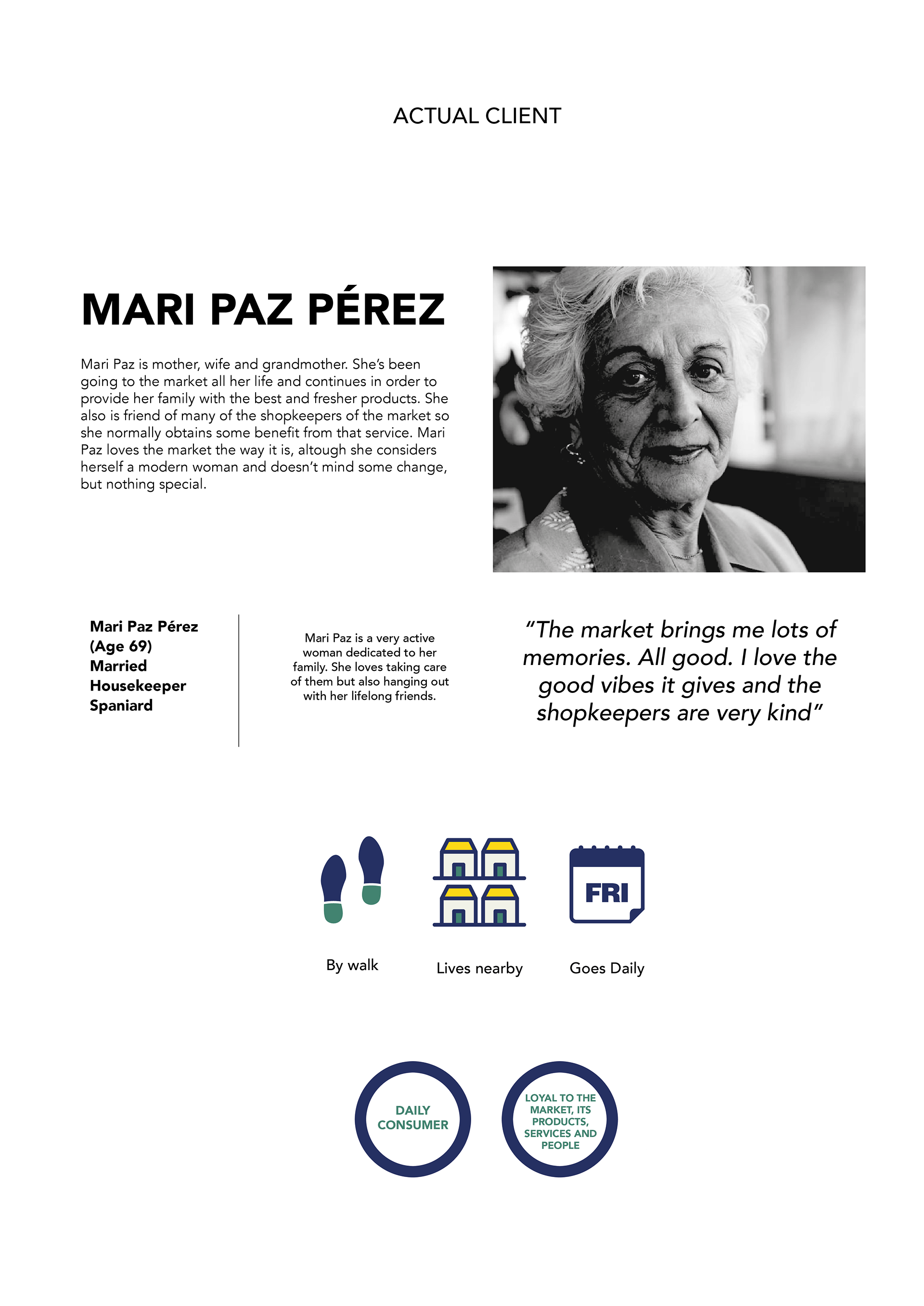

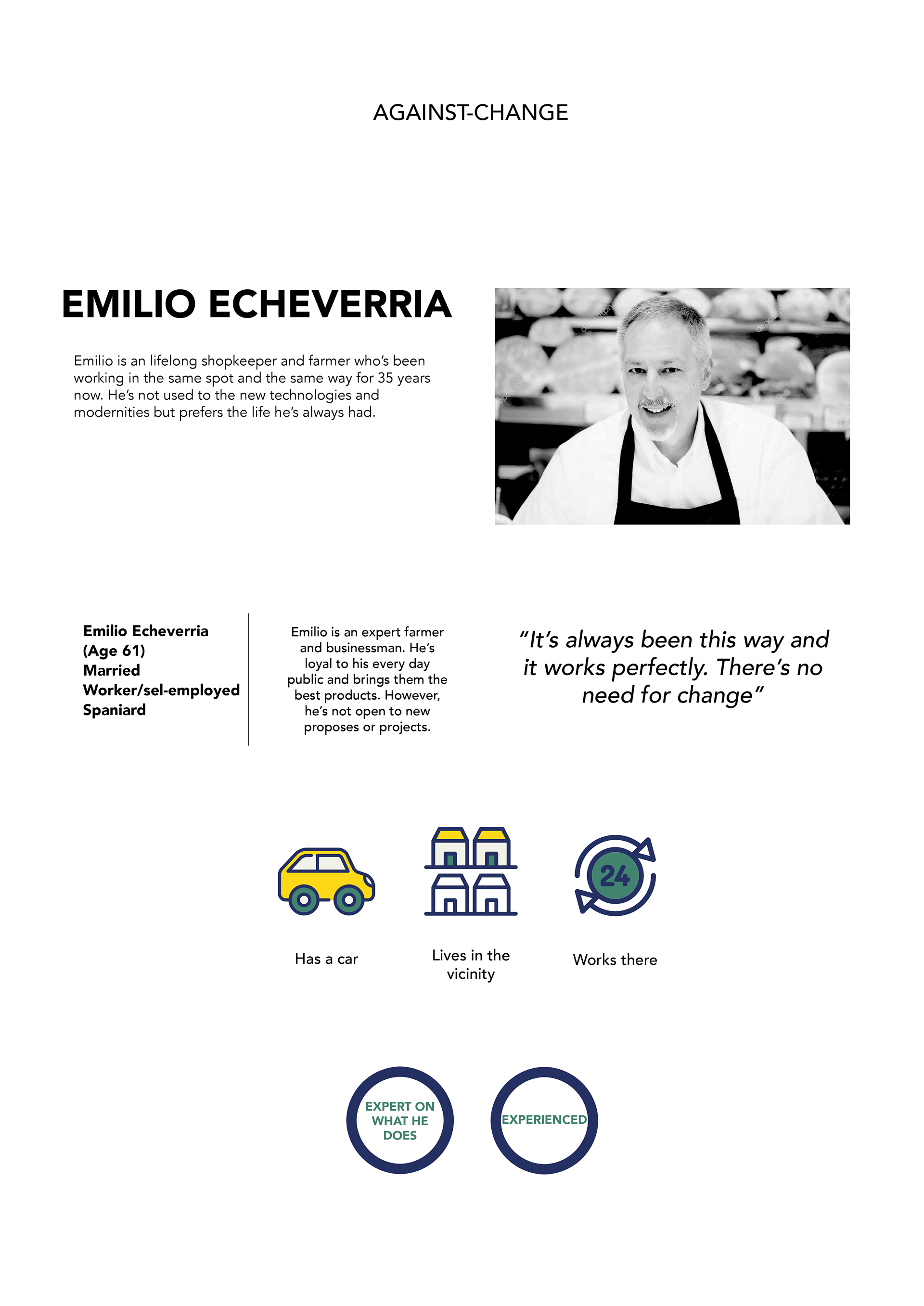
And then we visualized the journeys of each of them. The different touchpoints, steps, pains, and goals as they go through their service experience.
New Targets
Targets we want to engage in the market

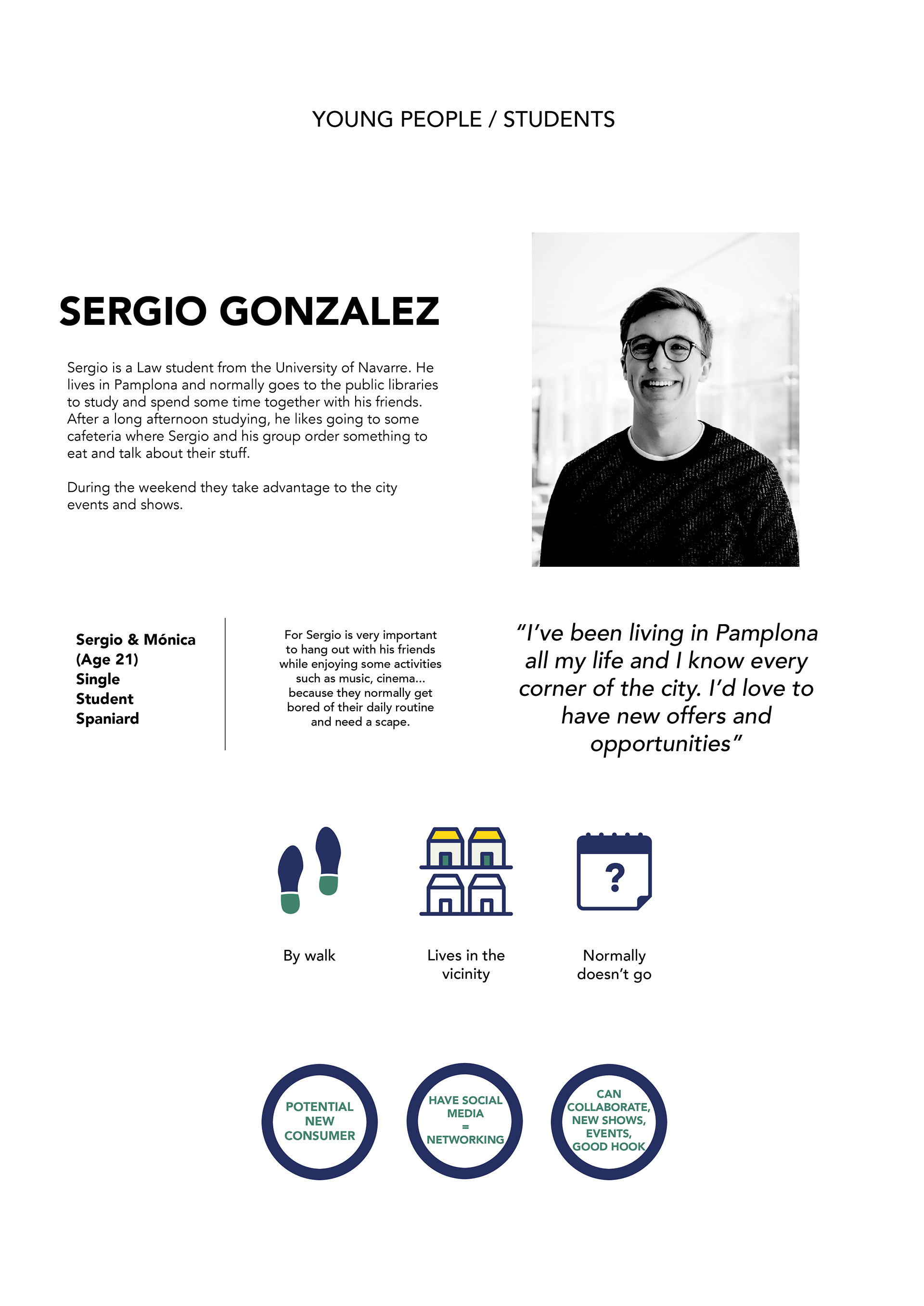
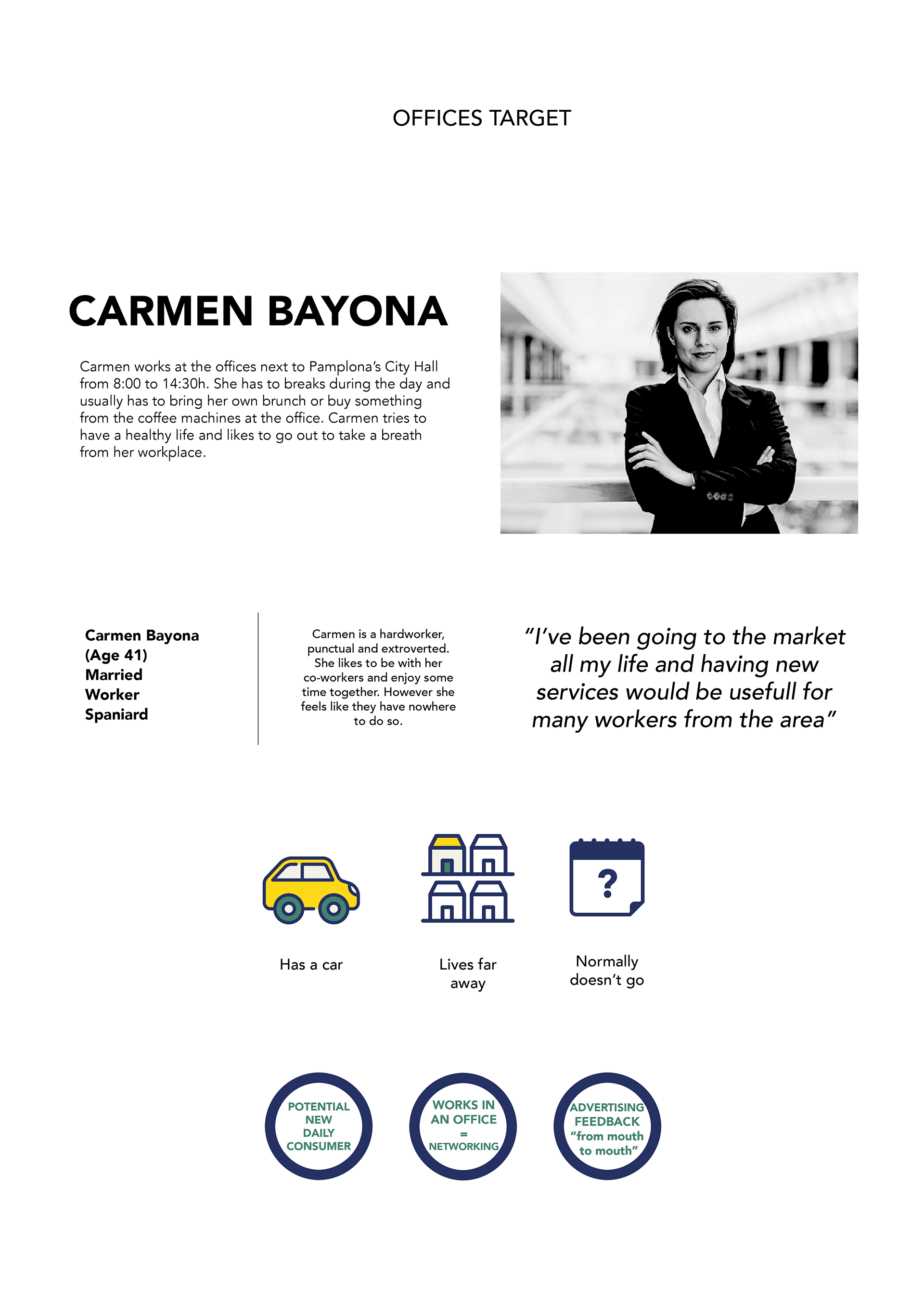
New entrepreneurs who enjoy working with fresh and organic products to create their best dishes. Engage with the young public that loves to try new things, who are ready to go with their friends, spread the word and feel connected to this new trend. And finally, looking for the closest possible clients who are all the office workers whose jobs are in the building surrounding the market.
Market Analysis
What's the future of Markets in other cities & countries?
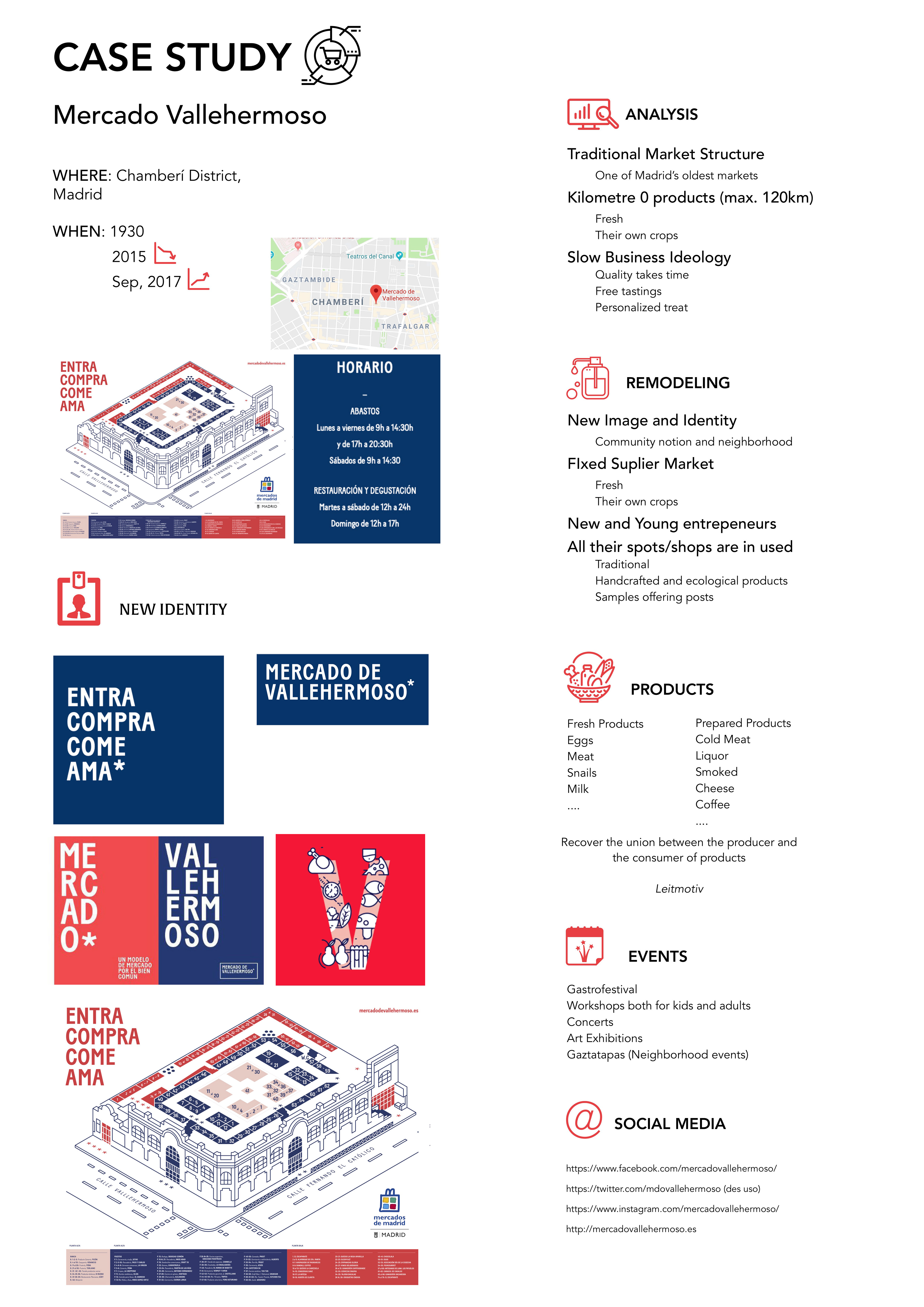
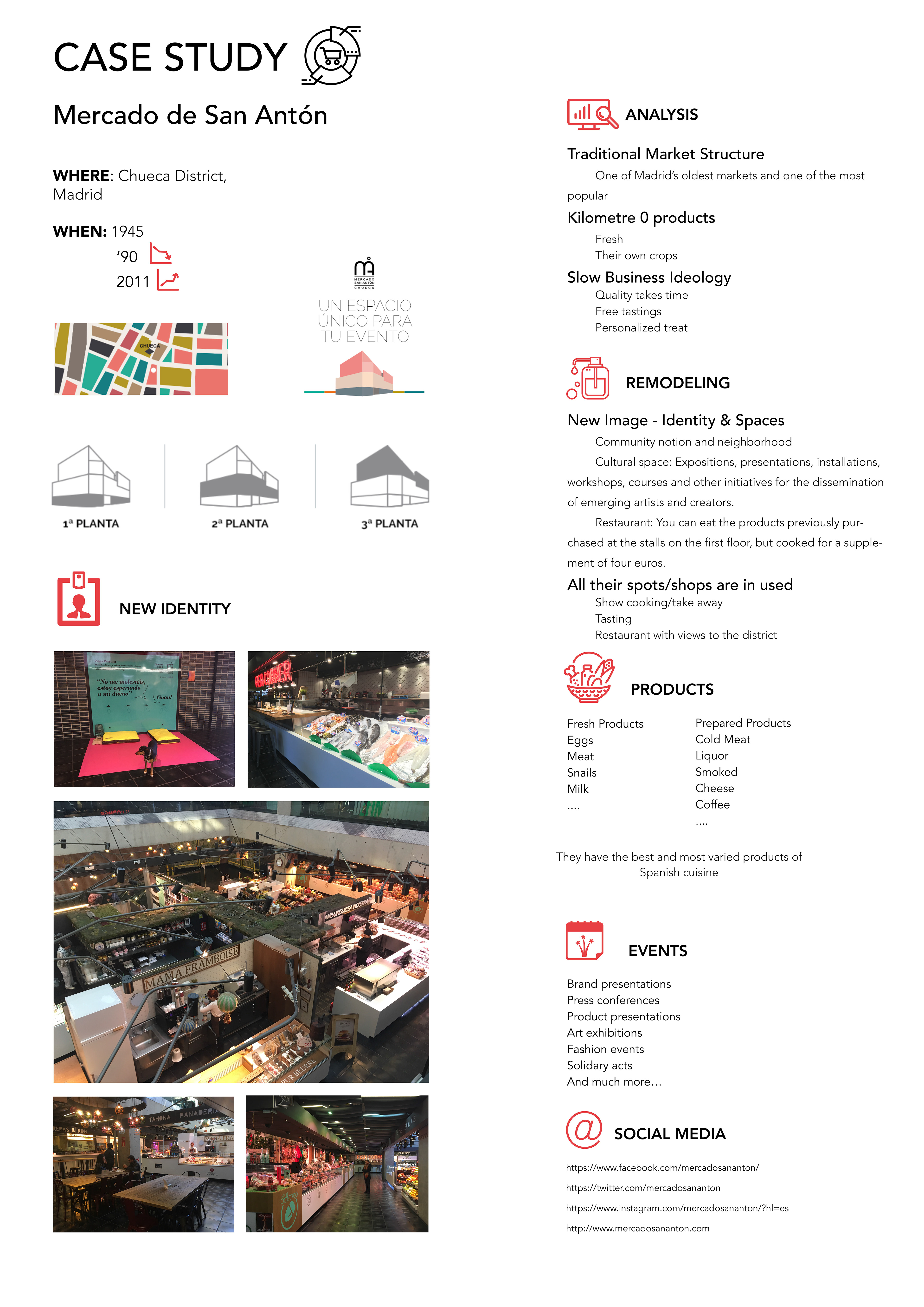
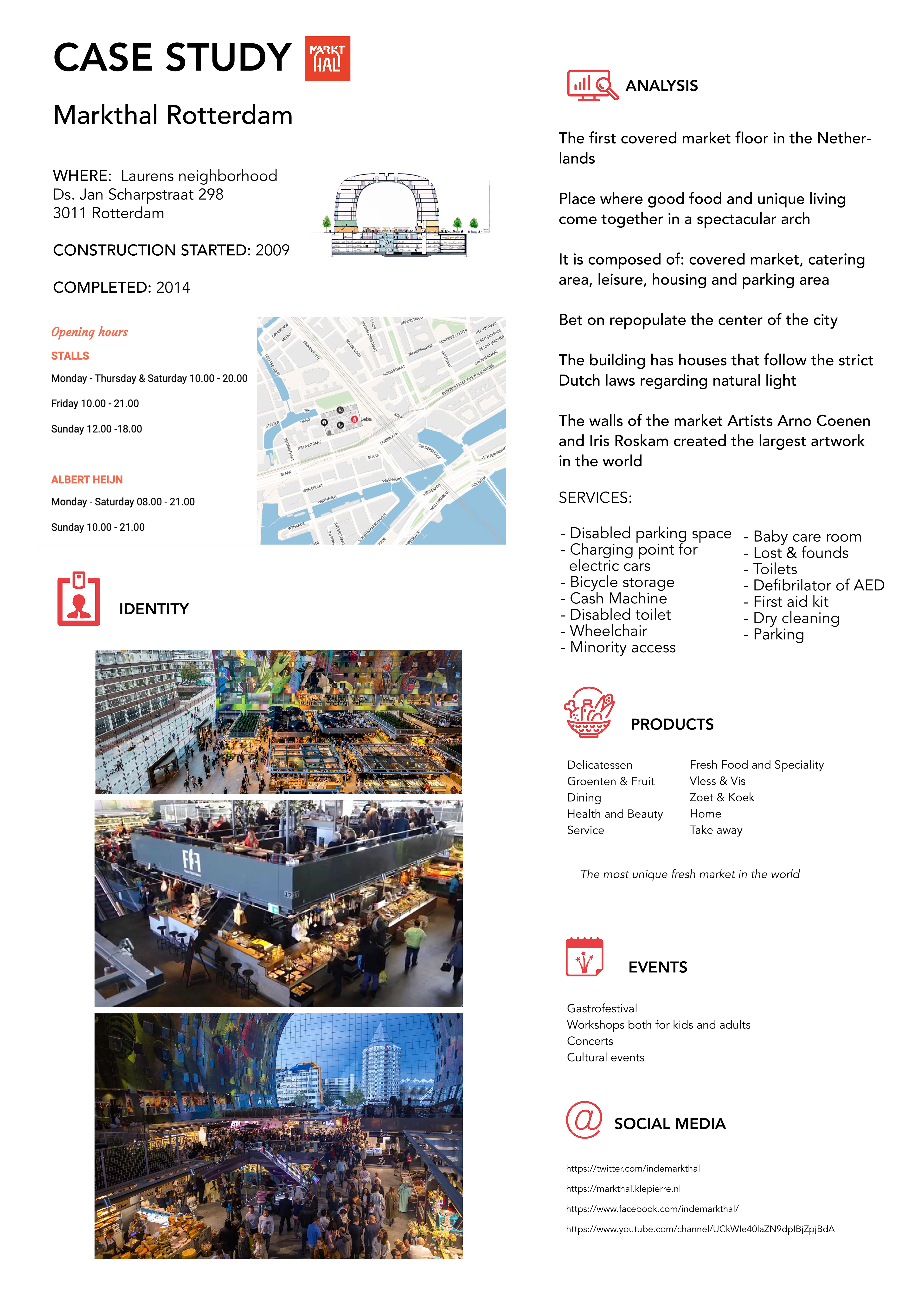
They understand that fresh, organic products are still in demand, however young and new customers don't have the time to stop and prepare them at home. We need to reinvent the market experience.
Outcome
Zero Waste Market
Poster Designed to exhibit at the Design Week Milan (NoLo Market)
The Zero Waste market looks for its clients’ satisfaction and covers their needs. At the same time, it offers solutions to social and environmental issues by improving their performance along its life cycle. In order to achieve that, we focused on three sustainability views: Environmental or ecological consumption, Economic or Critic consumption, and Social or Supportive consumption.
ECONOMIC
Critic Consume
When consuming we should opt for a market of goods and services that protects not only the environment but also global equality and the workers' wellbeing. A consumption that takes into account economical, social, and environmental consequences when choosing among the market options.
1. Stalls &products distribution
2. Increase products variety
SOCIAL
Supportive Consume
It’s not only a choice that will work out well for nature but also for society. A market that values social justice, ethics, and solidarity. Looking for the social well-being and not the individual benefit.
1. A place for people to stay & meet
2. Workshops - Talks - Extras
ENVIRONMENTAL
Ecological Consume
An ecological initiative that covers the society's needs but goes according to the environment's capacities and timing. This means to work hand in hand with nature and all around it: no chemicals, no genetic alterations or modifications, etc
1. Free plastic area
2. Long-lasting bags
3. Refilling (in bulk)
GLOBAL
Community Service
In order to connect the three services into one and have them under control, we’ve designed three touchpoints such as the App, a Market card, and Workshops. With them, anybody will have access to the latest updates, follow their activity inside the market, participate in activities from any field, and feel part of the market community.
1. Market App
2. Market Card
OUR VISION:
1. Plastic-Free Area
2. Refilling till dying
3. Bring your own bag
4. Reuse the rot
5. Second life objects
6. Sustainability our mantra
7. Workshops! Workshops! Workshops!
Living Lab in the Market
Take a small sample from the concept and put it into practice with our targets
Video of the Living Lab
The goal of this Living Lab was to show our targets, on a small scale, how a Zero Waste Market would work. And for us to discover through a final survey if the new experience provided is something appalling, engaging and what is most important, if it would work within the market.
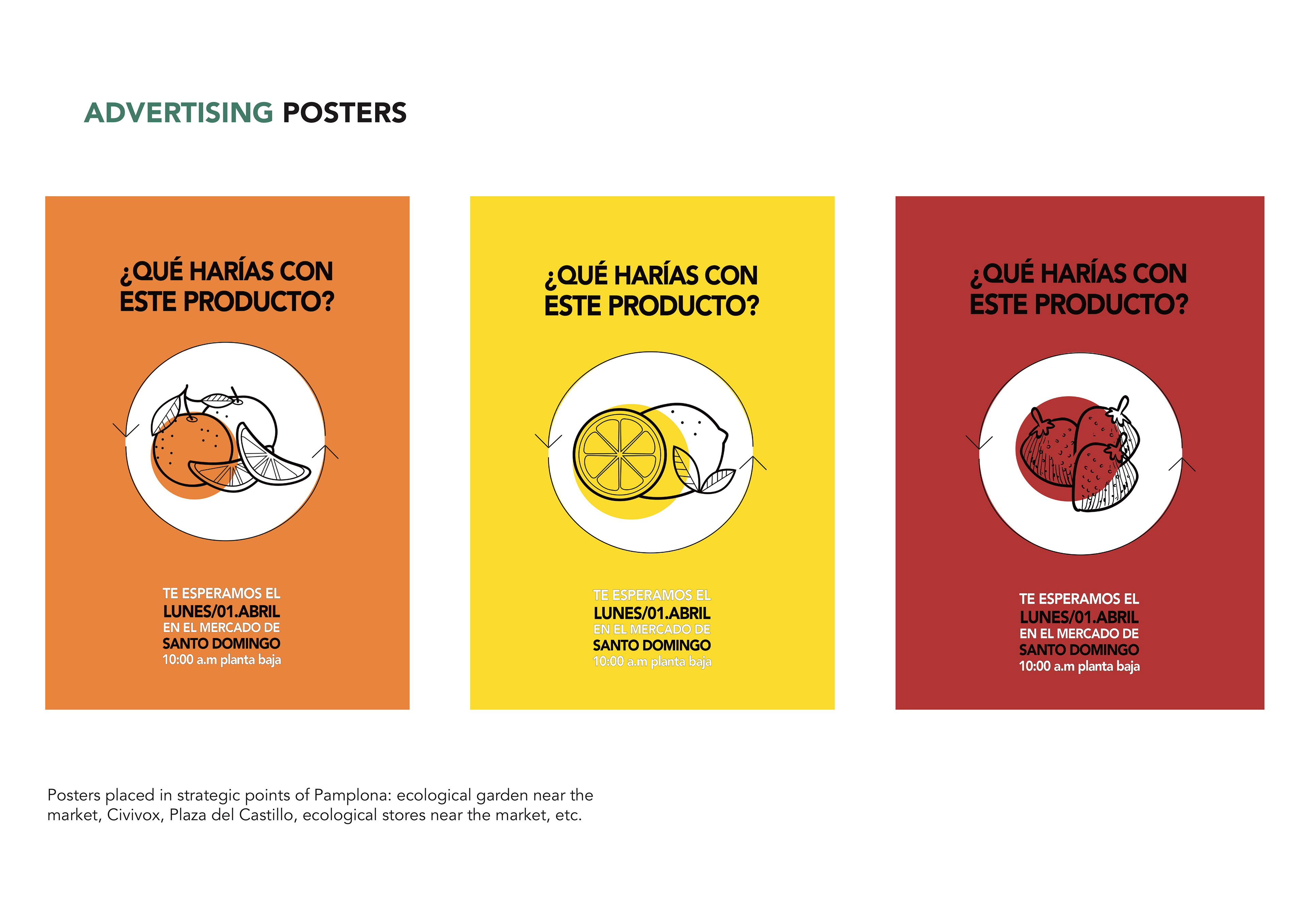

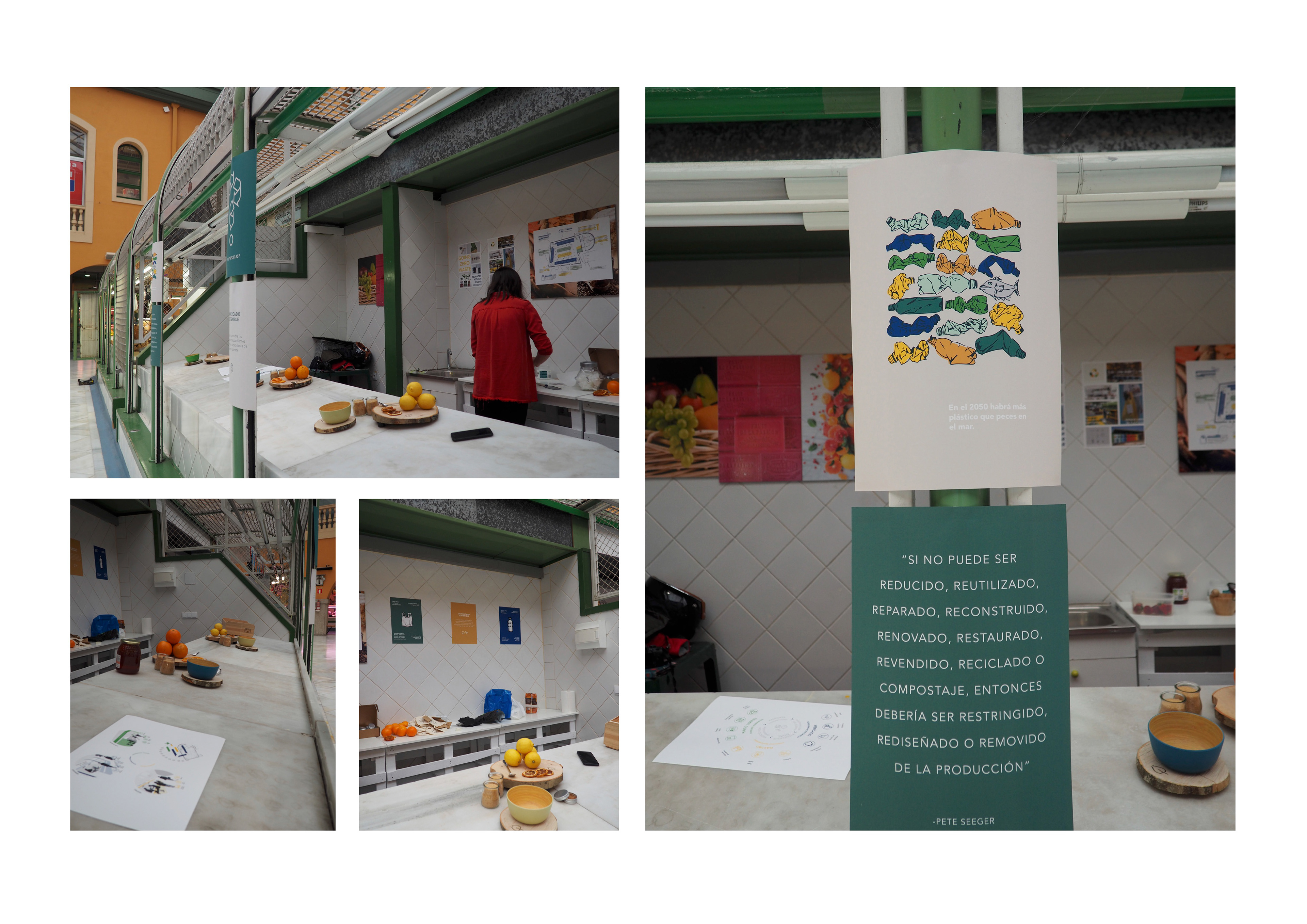
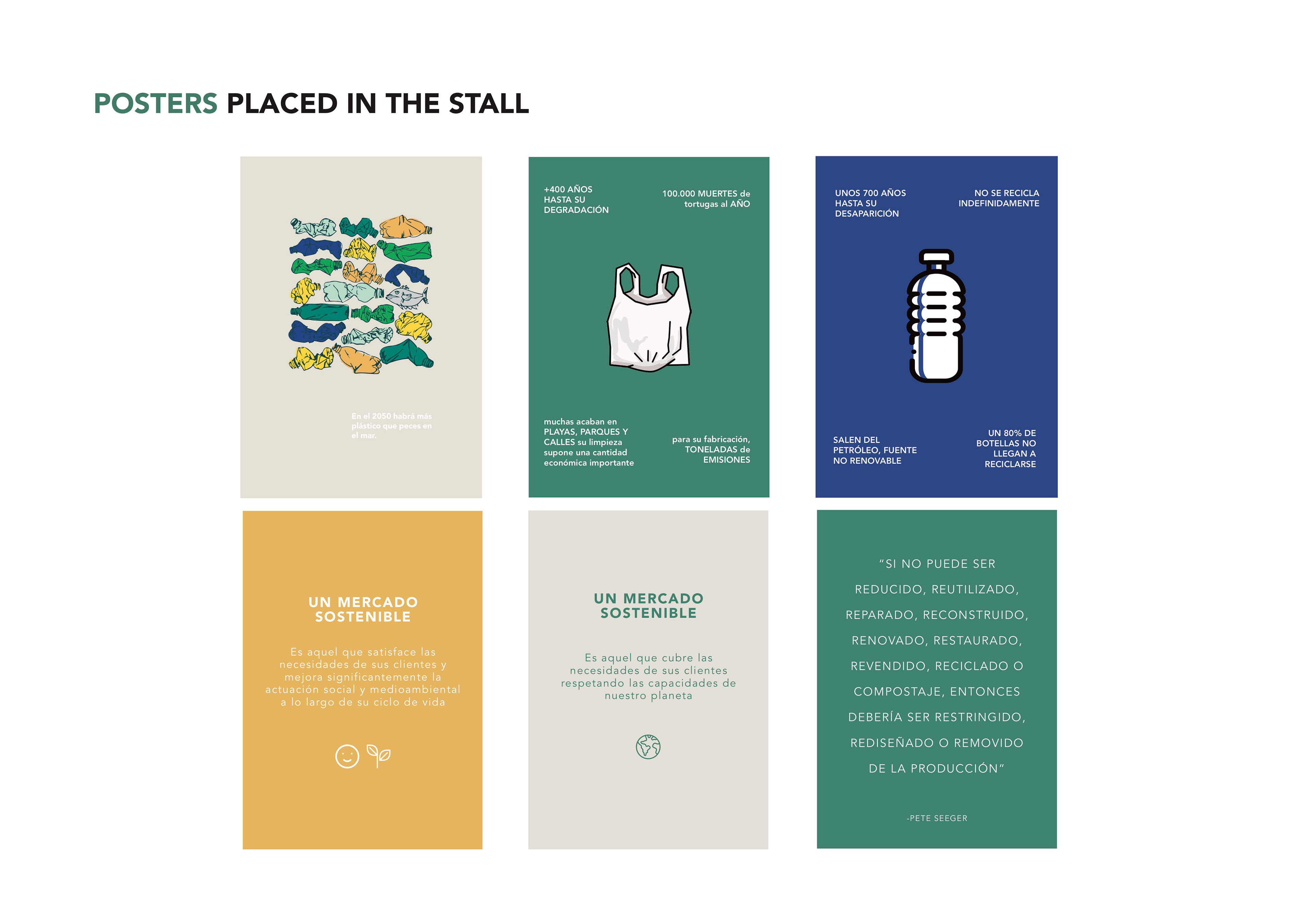
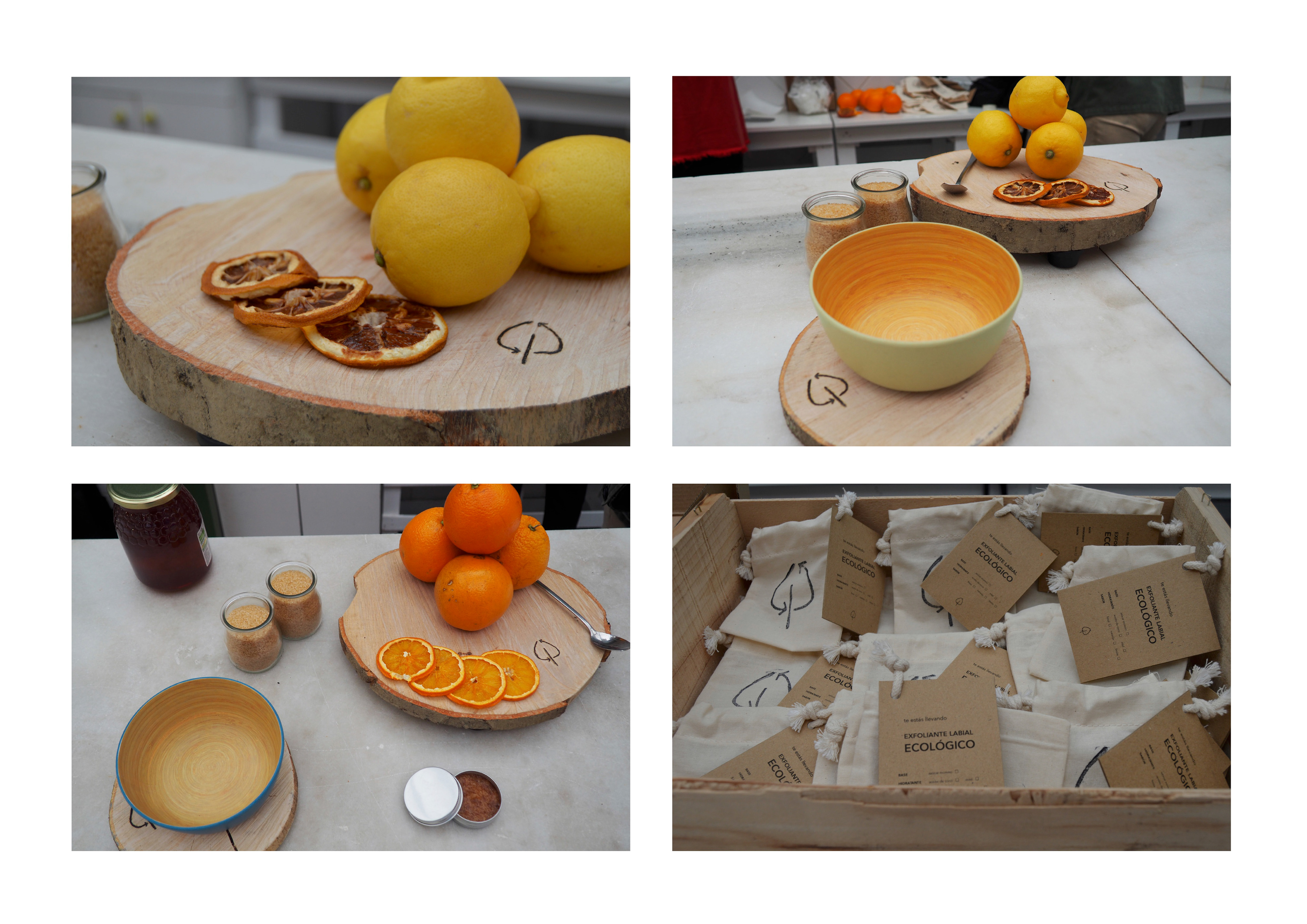

Market's new spaces
Space Analysis - New Distribution
At the beginning of the research, we conducted a space analysis through which we wanted to understand people's flows, the most crowded spots of the market, and the organization of those spaces themselves.
Current market plans and distribution
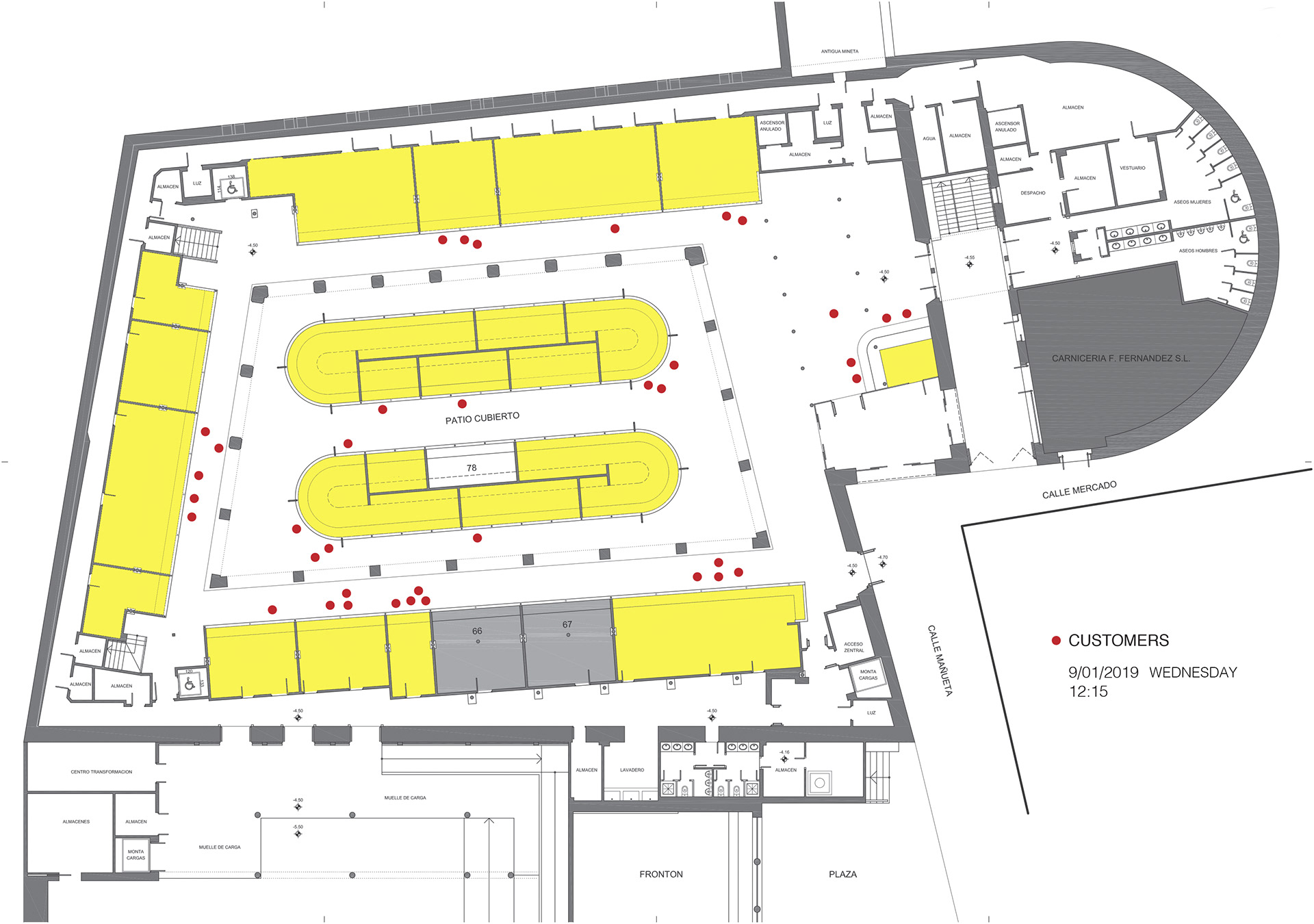

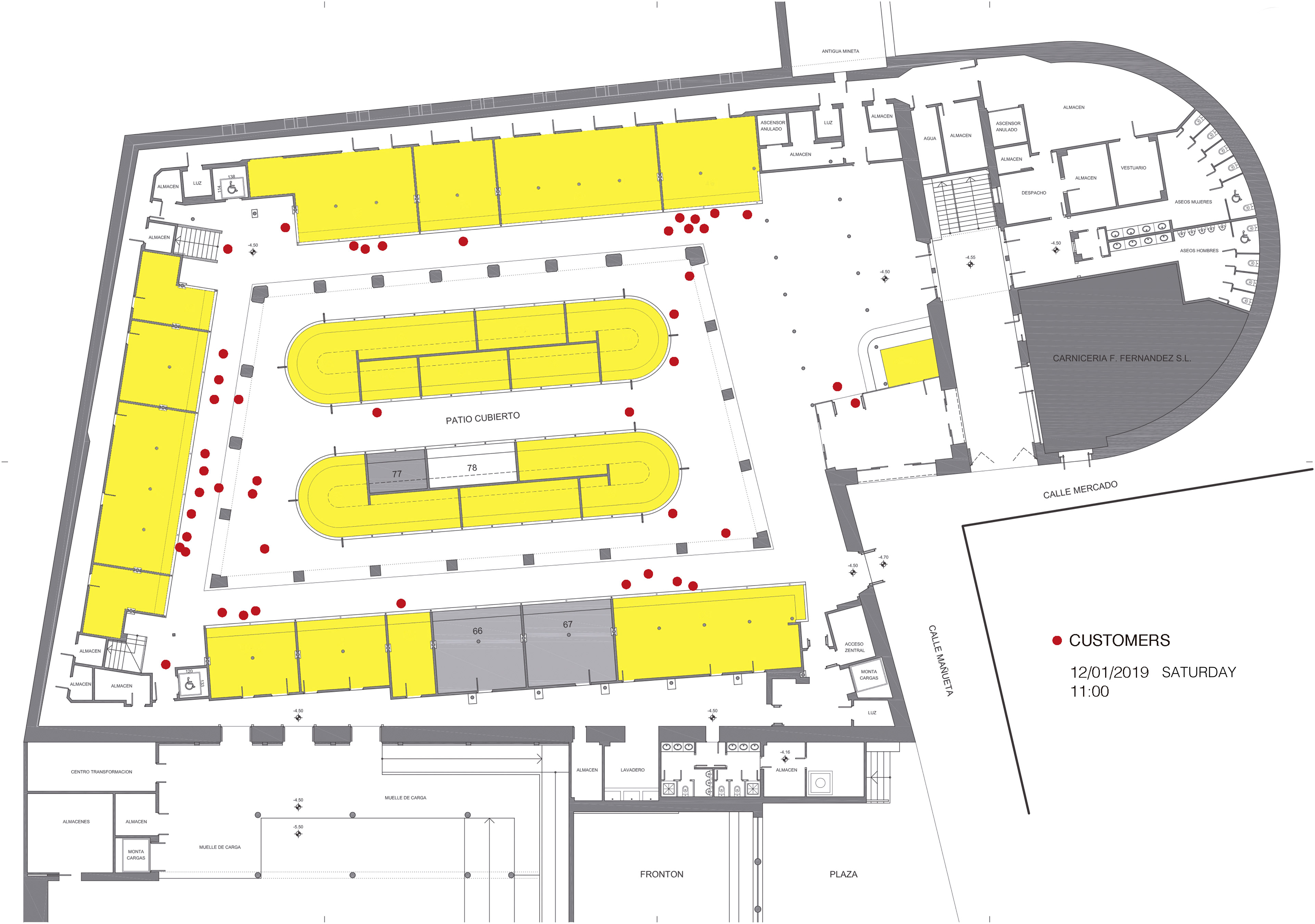
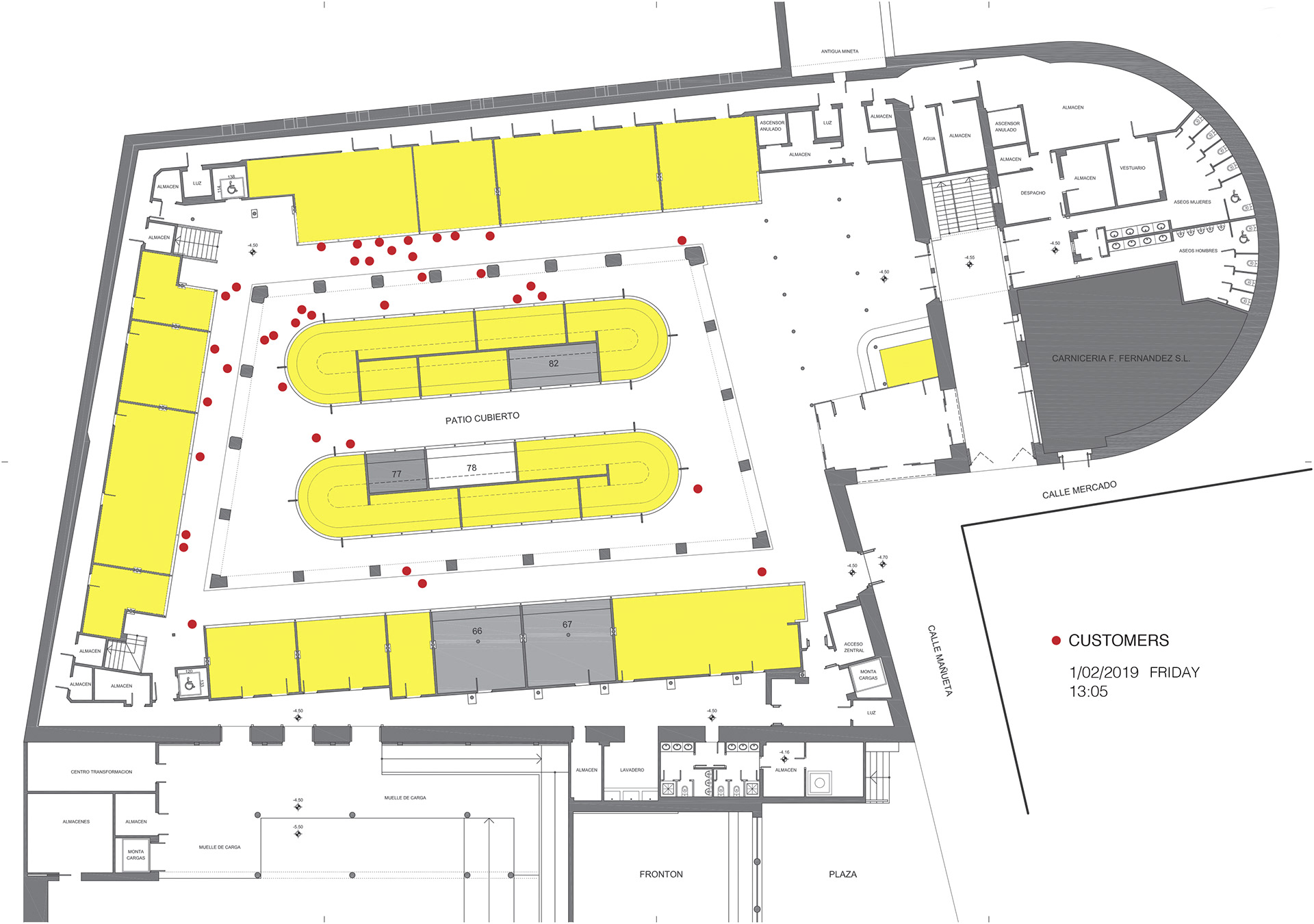
Insights perceived:
1. Closed stalls during opening hours
2. Most frequented stalls are Butcher's shops
3. Most of the customers (red dots) were couples or families
Our new space distribution proposal
Following the initial concept of Market + Eco-Kitchen + HWRC, our approach was to take advantage of each of the booths, corners, and empty spaces.
Locate the market shops surrounding the central square so we move the flow of people shopping to the sides, creating a circular movement around the market. Then use the two central structures, one to build a gastro area where customers will be able to sit and enjoy their break time or take food away. And the second structure for extra activities the market already provides such as talks or workshops. The Café will stay in the same corner although, it will share space with the HWRC zone and will be expanded to provide movement for the workers.
Open and adaptable spaces where daily and mundane activities take place every day.
Market areas representation
Final Look & Feel
The new Santo Domingo Market offers the satisfaction the client needs and improves significantly the social and environmental performance along its life cycle
Takeaways
We learned from our mistakes.
1. At the time of presenting, focus on what's important: How we did that and why we came up with that concept
2. Accept the critics and grow from them
3. The importance of Co-Design and how gratifying it was to see all the participants involved